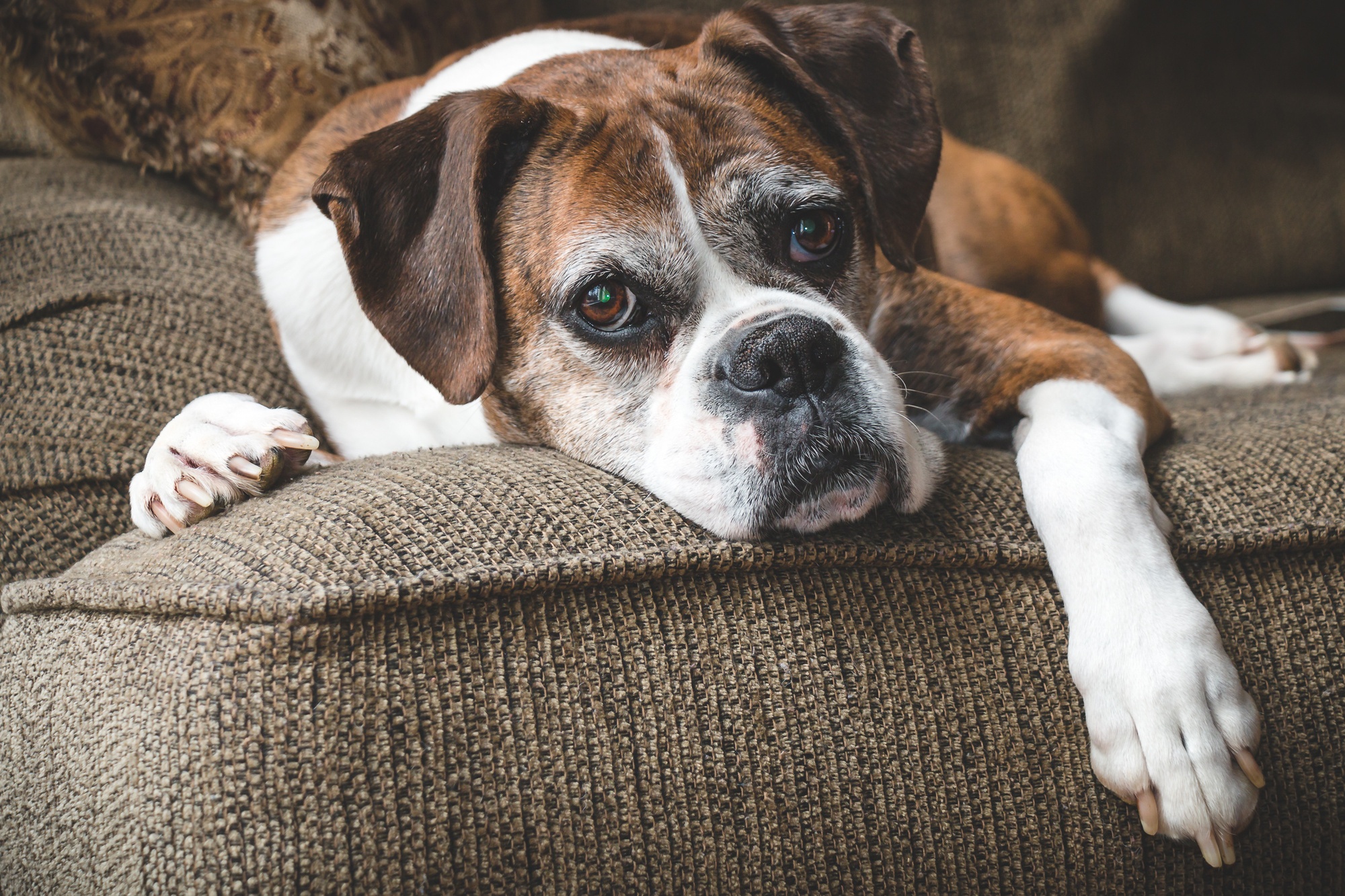No dog owner wants to see their pup in pain.
So when your beloved canine suddenly has trouble walking, jumping, or even standing, it’s natural to panic.
While many different conditions could be to blame, one that commonly causes a loss of balance is vestibular disease. Keep reading to learn more about this disease, and how you can help your older dog adjust.
What is Vestibular Disease?
Just as it does in humans, dogs’ vestibular systems are responsible for helping them maintain balance. It features components that reach from the brain to the inner and middle ear.
And just as in humans, when the vestibular system experiences damage, dogs will have trouble balancing.
This is referred to as vestibular disease. In dogs, this disease presents itself as a sudden loss of balance. It’s particularly common in older dogs and is sometimes referred to as old dog vestibular disease or syndrome.
When the disease starts, dogs who previously had no trouble getting around will suddenly have issues with regular movements. They may struggle to jump or get onto beds or couches. They may also lose balance when walking on even surfaces.
Some pet owners believe their dogs to be having a seizure when the disease first starts. That’s because dogs may begin to waver or shake, then fall over, without warning.
What Causes Vestibular Disease?
Experts aren’t sure exactly what causes vestibular disease. Some believe it may be connected to ear infections, and that some dogs may be pre-dispositioned to developing it.
While the disease isn’t permanent, it can cause dogs, and especially older dogs, to develop a permanent head tilt. This head tilt can cause lasting neck pain.
How Can You Treat Vestibular Disease?
Unfortunately, there is no cure for vestibular disease in dogs. However, the symptoms of the disease, as well as some of the side effects can be treated.
This will help give older dogs relief and allow them to still enjoy their normal daily activities.
Treating vestibular disease in dogs means a visit to an experienced vet.
Some vets are opting to mimic the treatments used on humans who have experienced damage to their vestibular system (know as benign paroxysmal positional vertigo, or BPPV, in humans).
A trained physiotherapist goes through a series of manual positions with the dog’s head. Along with gentle massages, as well as lasers or acupuncture, the vet provides relief from the neck pain that vestibular disease can cause.
While vestibular disease often doesn’t last for long, the neck pain caused by the head-tilt can. That’s what makes this treatment a great choice for older dogs who have had vestibular disease.
How to Care for a Dog with Vestibular Disease
Because vestibular disease will eventually go away on its own, without treatment, there isn’t much that pet owners can do to help their dogs recover faster. However, it’s still important to visit your vet if you notice the symptoms of this disease.
They’ll be able to give you a sure diagnosis and offer suggestions for treating the neck pain that accompanies the disease.
If you found this advice helpful, check out the rest of our blog for more content like this!
Image Attribution:
Adobe Stock royalty-free image #105791135, ‘Old Boxer Dog’ uploaded by Holly Michele, standard license purchased from ; file retrieved on October 16th, 2018. License details available at – image is licensed under the Adobe Stock Standard License.



